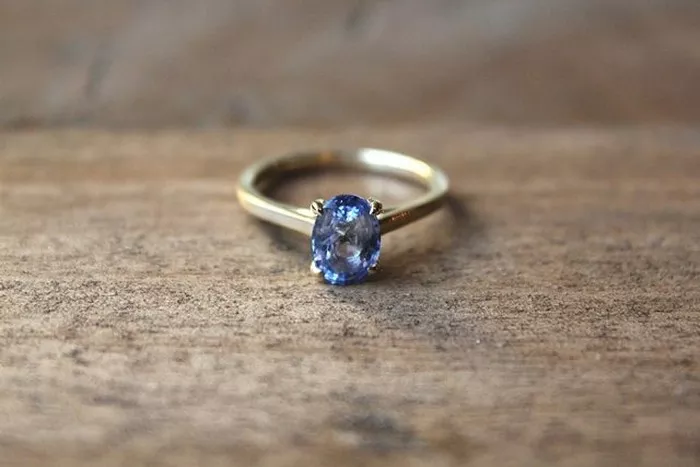Jewelry appraisal involves a thorough understanding of gemstones, their origins, and the factors that determine their quality and value. Among the various gemstones, yellow sapphires hold a special place due to their vibrant hues and rarity. In recent years, the advent of laboratory-cultivated yellow sapphires has raised questions about their quality and reliability. This guide aims to provide a comprehensive, logical, and easy-to-understand overview of the reliability of laboratory-cultivated yellow sapphire quality.
Understanding Natural and Laboratory-Cultivated Yellow Sapphires
Yellow sapphires are a type of corundum, which is a mineral that forms under high temperatures and pressures in the Earth’s crust. Natural yellow sapphires are rare and highly valued for their vivid yellow hues, which can range from pale to intense. In contrast, laboratory-cultivated yellow sapphires are created in a controlled environment that mimics the natural conditions required for sapphire formation.
The Process of Laboratory Cultivation
Laboratory cultivation of yellow sapphires typically involves two main methods: the Verneuil process and the flux growth method. The Verneuil process, also known as the flame-fusion method, involves melting a mixture of alumina and other trace elements in a high-temperature flame. The molten material is then deposited onto a seed crystal, gradually forming a sapphire crystal. The flux growth method, on the other hand, uses a molten flux to dissolve alumina and other elements, which are then crystallized to form sapphires.
Quality Factors of Laboratory-Cultivated Yellow Sapphires
When assessing the quality of laboratory-cultivated yellow sapphires, several factors need to be considered:
Color: Color is one of the most important factors determining the value of yellow sapphires. Laboratory-cultivated yellow sapphires can be produced in a range of yellow hues, from pale to intense. The intensity and purity of the color are crucial in determining the quality of the sapphire.
Clarity: Clarity refers to the absence of inclusions or imperfections within the sapphire. Natural sapphires often contain inclusions, which can affect their clarity and value. Laboratory-cultivated sapphires, however, can be produced with high clarity, as the controlled environment minimizes the formation of inclusions.
Cut: The cut of a sapphire refers to the way in which it is shaped and polished. A well-cut sapphire will maximize its brilliance and sparkle, enhancing its overall appearance. Laboratory-cultivated sapphires can be cut to precise specifications, ensuring optimal brilliance and clarity.
Carat Weight: Carat weight is a measure of the sapphire’s size and is a significant factor in determining its value. Larger sapphires are generally more rare and valuable than smaller ones. Laboratory-cultivated sapphires can be produced in a range of sizes, from small stones to large, statement-making gems.
Reliability of Laboratory-Cultivated Yellow Sapphire Quality
The reliability of laboratory-cultivated yellow sapphire quality is largely dependent on the technology and expertise used in the cultivation process. Advances in technology have enabled the production of high-quality, vibrant yellow sapphires that rival natural stones in appearance and quality. However, it is important to note that not all laboratory-cultivated sapphires are created equal. Some manufacturers may use inferior materials or techniques, resulting in lower-quality stones.
Verification and Certification
To ensure the reliability of laboratory-cultivated yellow sapphire quality, consumers should seek out certified stones. Certification involves a thorough examination of the sapphire by a gemologist, who assesses its color, clarity, cut, and carat weight. The gemologist will also verify that the sapphire is laboratory-cultivated, rather than natural. Certified stones come with a report that details the gemologist’s findings and provides a guarantee of quality.
Comparison with Natural Yellow Sapphires
While laboratory-cultivated yellow sapphires may rival natural stones in appearance and quality, there are some differences between the two. Natural sapphires are rare and often contain unique inclusions that give them a one-of-a-kind appearance. Laboratory-cultivated sapphires, on the other hand, can be produced in large quantities and have a more uniform appearance. Additionally, natural sapphires may have a higher emotional and sentimental value due to their rarity and natural origin.
Ethical Considerations
The production of laboratory-cultivated yellow sapphires also raises ethical considerations. Natural sapphires are often mined in developing countries, where mining practices may be environmentally destructive and labor conditions may be poor. Laboratory-cultivated sapphires, however, are produced in a controlled environment that minimizes environmental impact and ensures safe working conditions.
Conclusion
In conclusion, the reliability of laboratory-cultivated yellow sapphire quality is largely dependent on the technology and expertise used in the cultivation process. Advances in technology have enabled the production of high-quality, vibrant yellow sapphires that rival natural stones in appearance and quality. However, consumers should seek out certified stones to ensure their quality and authenticity. While laboratory-cultivated sapphires may not have the same rarity or sentimental value as natural stones, they offer an ethically and environmentally sustainable alternative that is becoming increasingly popular in the jewelry market.
Related topic:
- Can Taurus Wear Yellow Sapphire
- Can Citrine and Yellow Sapphire Be Worn Together
- Can Pisces Wear Yellow Sapphire


